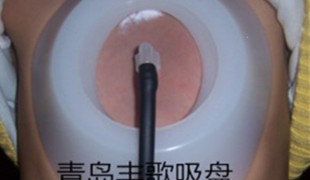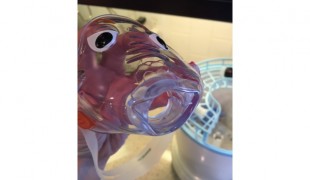- 6728
- 500
- 13
- 10
- 0
- Help Ukraine
About the solution
Abi Huskins thought that her sons Ivan and Ian were very malnourished, but she soon realised that her sons kept low levels of haemoglobin; a protein found in blood cells that carries oxygen. She then tested them for sickle cell disease (SCD), which came positive. SCD can cause blockages of blood flow in different parts of the body, and so, many children with SCD end up having to receive frequent blood transfusions.
A first stem cell transplant greatly helped Ian, but Ivan kept needing daylong transfusions every four weeks called aphaeresis, which removes his blood supply and strips the sickle cells, replacing them with healthy red blood cells from a donor.
One day Abi realized that the dressing used to secure her son’s transfusion port needle was not good enough. Unlike needles inserted on an angle, which have a transparent dressing, straight port needles prevent similar dressings and makes healthcare workers have to improvise. The dressing used on her was made of layers of gauze and tape to hold the needle in place, which doesn’t allow easy visualization of possible redness or infection on her son’s skin. Also, It was absorbent, instead of waterproof, and the soft material left it vulnerable to being knocked out of place or otherwise damaged if the young boy squirmed.
That is when Abi decided to create a better dressing for the transfusion port herself. She created the Guard-A-Port device. It is a transparent port designed for patients who need chronic blood transfusions, like her sons. It is a a two-piece plastic tent that clips together to shield a patient's port. It can be held in place with a water- and air-tight plastic dressing, like Tegaderm, that sticks to the skin. “I felt a responsibility to use my nursing background to do something for patients who may not know what the standard of care should be.”, Abi explained.
Initially she made a prototype made out of half a wine cork and a spare needle – things she found in her house. She cut an old wine cork in half. The amount of pressure required to insert a spare needle into the cork was similar enough to mimic a real clinical situation. Then she set out to mould two halves of a tent, flattening the Play-Doh into two rounds and folding them over to sit almost like a cup over the top of the wine-cork port, connecting on the sides but leaving room at the top for the needles and requisite tubing to exit.
After talking to the Director of Clinical Care Innovation Accelerator at the Indiana Clinical & Translational Sciences Institute, Jonathan Merrell, she got in touch and worked together with a team of engineering students, she created a usable product from her initial prototype.
Abi now wants the solution to help other patients. She got a provisional patent and the team is now in the process of finding a company interested in selling it commercially.
Adapted from: http://bit.ly/2HgGYSm
https://bit.ly/2Pf6Ggq
This solution shall not include mention to the use of drugs, chemicals or biologicals (including food); invasive devices; offensive, commercial or inherently dangerous content. This solution was not medically validated. Proceed with caution! If you have any doubts, please consult with a health professional.
DISCLAIMER: This story was written by someone who is not the author of the solution, therefore please be advised that, although it was written with the utmost respect for the innovation and the innovator, there can be some incorrect statements. If you find any errors please contact the patient Innovation team via info@patient-innovation.com
-
-
480
-
0
-
6738

Father develops a suction device to correct his son’s funnel chest
CAREGIVING
Pectus Excavatumy
Bone Disorders (Decalcification, Bone Deformity, Bone Fracture, Bone Infection)
Treatment/Surgical device
Assistive Daily Life Device (to help ADL)
Body-Worn solutions (Clothing, accessories, shoes, sensors...)
Muscle pain or stiffness
Fatigue
Back pain
Improving respiratory function
To improve Treatment/Therapy
Caregiving Support
Cardiology
General and Family Medicine
Medical Genetics
Orthopedics
Pediatrics
Pneumology
China
-
-
-
725
-
0
-
11307

Ava the Elephant – Medicine dispenser for children
SWALLOWING: Swalling food and liquids
CAREGIVING
Down Syndrome (Trisomy 21)
Neuromuscular Disorders
Treatment/Surgical device
Pharma
Strategy/Tip
Vision problems
Difficulty coordinating movements
Muscle weakness
Trouble with fine motor skills (e.g., writing, buttoning clothes)
Cognitive impairment
Memory loss
Confusion
Anxiety
Hearing loss or ringing in the ears (tinnitus)
Mood swings
Manage Medication
To improve Treatment/Therapy
Caregiving Support
General and Family Medicine
Medical Genetics
Neurology
Pediatrics
United States
-
-
-
521
-
3
-
9449

Mother develops hands-free nebulizer for her son
CAREGIVING
VENTILATION
Cystic Fibrosis
Treatment/Surgical device
Strategy/Tip
Difficulty breathing deeply
Nasal congestion
Frequent respiratory infections
Chronic cough
Productive cough (with sputum)
Stridor/wheezing.
Shortness of breath
Improving respiratory function
To improve Treatment/Therapy
Caregiving Support
Medical Genetics
Pediatrics
Pneumology
United States
-
 en
en